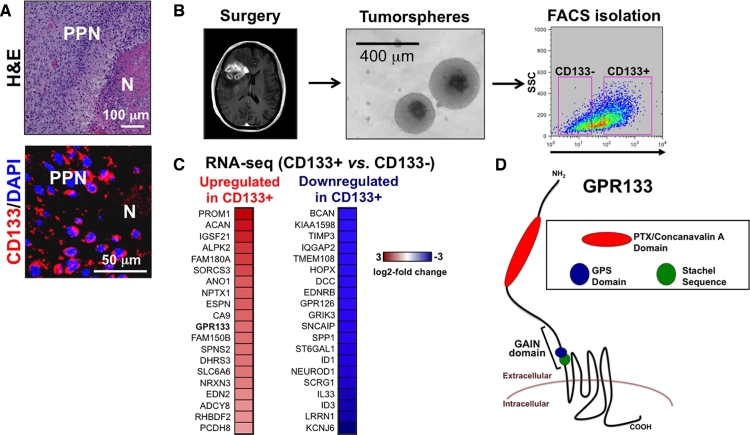FIGURE 1.
Identification of GPR133 enrichment in the CD133+ cell population of human GBM. A, CD133 (PROM1) is predominantly expressed in the hypoxic regions of PPN in human GBM biospecimens. B, Protocol for FACS isolation of CD133+ and CD133– cells. Human surgical specimens are cultured as tumorspheres in serum-free media supplemented with epidermal growth factor and fibroblast growth factor 2. CD133+ and CD133– populations can be FACS-isolated by incubating dissociated tumor cells with anti-CD133 antibody (Miltenyi) conjugated to a fluorophore. C, Top 20 genes upregulated or downregulated in CD133+ vs CD133– cells in a patient-derived GBM culture. D, Membrane topology of human GPR133. The extracellular domain contains unique (PTX/concanavalin A domain) and preserved domains (GAIN and GPS13,17), which are found throughout the aGPCR family. The Stachel sequence acts as an endogenous agonist.15 PPN, pseudopalisading necrosis; N, necrosis; H&E, hematoxylin and eosin; PTX, pentraxin; GPS, GPCR proteolysis site; GAIN, GPCR-autoproteolysis-inducing domain. Adapted from reference12, published OA-CC-BY-4.0.

